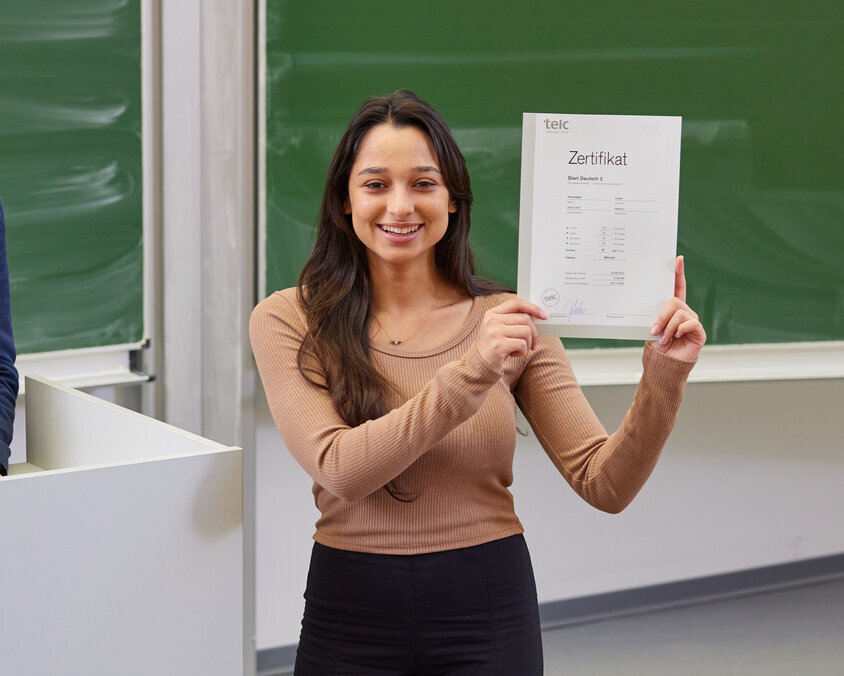What is the CEFR?
The Common European Framework of Reference for Languages, known as the CEFR, is a tool used to describe what language learners can do as they progress through different stages of learning.
It was published by the Council of Europe in 2001 with the goal of promoting educational transparency, making collaboration and movement between EU countries easier. The framework gives us a common understanding of language proficiency and is used in the teaching and assessment of languages throughout Europe, and increasingly elsewhere in the world. The Companion Volume with New Descriptors, published in 2020, broadens the scope of the original volume with extended levels and new descriptors for additional language competences.
It provides a coherent and comprehensive basis for the development of language syllabuses and curriculum guidelines, the design of teaching and learning materials, and the assessment of foreign language proficiency.
The 6 levels of the CEFR
The CEFR describes language proficiency at six levels, from A1 to C2, with ‘Can Do’ statements that specify what learners at each stage are able to understand and express. This makes it possible to compare tests and examinations across languages and borders.
A1 and A2: basic language skills
B1 and B2: independent use of language
C1 und C2: proficient use of language
How can I use the CEFR?
The framework is used to guide publishers and authors, test developers, school administrators and teachers in creating teaching and learning materials, assessments, and language programmes. It can also be used by learners to help them understand what they ‘can do’ at each level.
Take a look at the CEFR self-assessment grid and reflect on the different competences listed for your level and how well you can do them. This allows you to take control of your learning, recognise your progress and identify areas for improvement. When you know what skills and abilities are expected at each level, it’s easier for you to set learning goals.
telc examinations are designed to reflect the demands and competences of the Common European Framework of Reference for Languages: Learning, teaching, assessment.
Would you like to know more about the CEFR?
You can find in-depth information on the Council of Europe pages.
More informationA1
Listening: I can understand familiar words and simple phrases when they are spoken slowly and clearly
Reading: I can comprehend single words and simple sentences, e.g. signs and billboards
Speaking: I can communicate in short, simple phrases
Writing: I can produce short, simple notes and postcards and fill in forms
A2
Listening: I can understand the overall meaning of short, simple, clearly spoken messages
Reading: I can read and comprehend short, simple text, e.g. advertisements and personal correspondence
Speaking: I can make myself understood with a series of sentences in familiar everyday situations
Writing: I can produce short, simple notes, messages, emails and personal letters
B1
Listening: I can understand important information regarding work, school, free time, etc.
Reading: I can comprehend texts written in everyday language for general and job-related purposes
Speaking: I can participate in conversations regarding family, hobbies, work, travel and current events
Writing: I can produce simple, connected text on familiar themes and topics
B2
Listening: I can follow lengthy statements and reports as well as most films and TV programmes when the topics are somewhat familiar
Reading: I can understand articles, reports and contemporary literary prose
Speaking: I can relay ideas relatively fluently and spontaneously, and actively participate in discussions
Writing: I can produce detailed texts such as essays, reports and letters, and present arguments effectively
C1
Listening: I can understand lengthy reports, lectures, TV programmes and films without great effort
Reading: I can comprehend complex and lengthy texts of a specialised or literary nature
Speaking: I can express thoughts spontaneously, fluently and precisely
Writing: I can produce clear, well-structured texts in appropriate style on complex subjects
C2
Listening: I can understand spoken language with ease, even when spoken quickly
Reading: I can comprehend original texts of any complexity with ease
Speaking: I can participate effortlessly in all conversations and discussions, understanding and using colloquial language
Writing: I can produce sophisticated and complex texts, summarize and discuss specialized texts and literature






